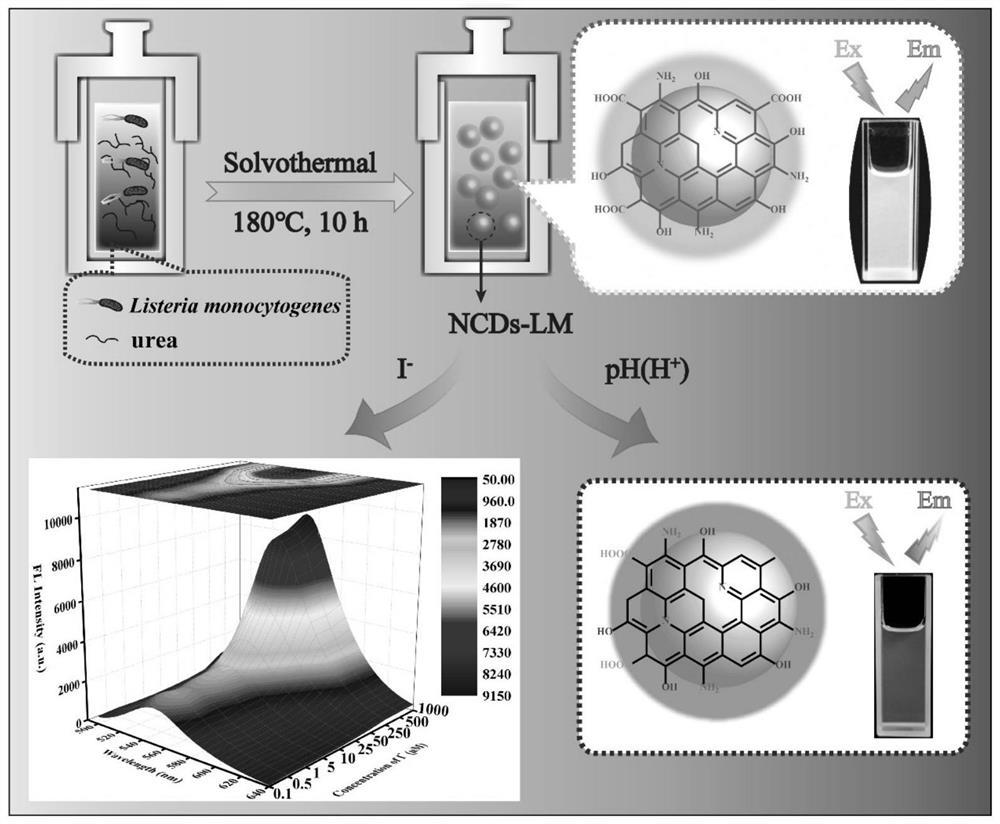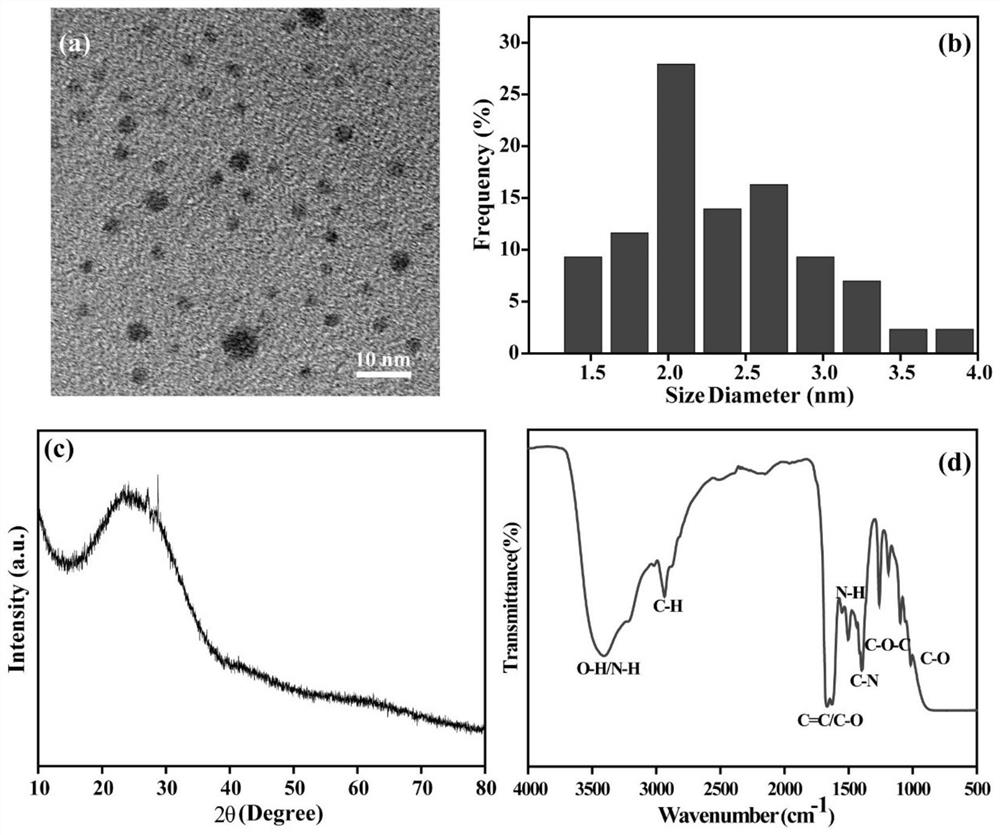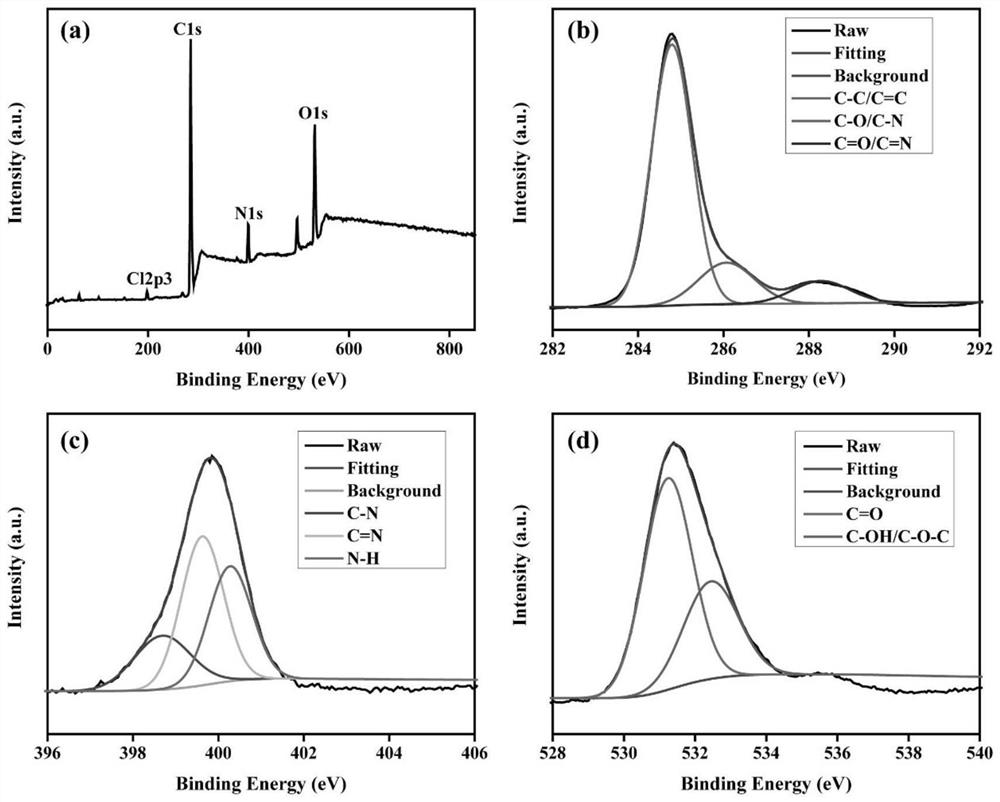Preparation method and application of nitrogen-doped carbon dots based on listeria monocytogenes source
A technology of nitrogen-doped carbon dots and Listeria, which is applied in the field of preparation of nitrogen-doped carbon dots and nitrogen-doped carbon dots, to achieve highly selective sensing capabilities, fast speed, and good stability
- Summary
- Abstract
- Description
- Claims
- Application Information
AI Technical Summary
Problems solved by technology
Method used
Image
Examples
Embodiment 1
[0036] Example 1: Synthesis of NCDs-LMs
[0037] Listeria monocytogenes was shaken in 30 mL of TSB medium and cultured at 37°C overnight. collect 10 9 CFU / mL cells were centrifuged at 4000 × g for 3 min and washed 3 times with ultrapure water. Then, the resulting cell pellet was added with 10 g of urea and then resuspended in 20 mL of N,N-dimethylacetamide. The solution was uniformly mixed, transferred to a 150 mL Teflon-lined stainless steel autoclave, and reacted at 180 °C for 10 h. The obtained dark brown solution was centrifuged at 8000 × g for 10 min, and the supernatant was filtered through a 0.22 μm filter membrane. The product was then purified by silica gel column chromatography using methanol and ethyl acetate as eluents. The collected eluate was dried on a vacuum rotary evaporator, diluted with water, and stored at 4°C for later use.
[0038] Characterization of NCDs-LMs: The as-prepared NCDs-LMs were analyzed by transmission electron microscopy (TEM), X-ray pow...
Embodiment 2
[0042] Example 2: Synthesis of NCDs-LMs
[0043] Listeria monocytogenes was shaken in 30 mL of TSB medium and cultured at 37°C overnight. Collect 5×10 8 CFU / mL cells were centrifuged at 4000 × g for 3 min and washed 3 times with ultrapure water. Then, the resulting cell pellet was added with 7.5 g of urea and then resuspended in 30 mL of N,N-dimethylacetamide. The solution was evenly mixed, transferred to a 150 mL Teflon-lined stainless steel autoclave, and reacted at 180 °C for 10 h. The obtained dark brown solution was centrifuged at 8000 × g for 10 min, and the supernatant was filtered through a 0.22 μm filter membrane. The product was then purified by silica gel column chromatography using methanol and ethyl acetate as eluents. The collected eluate was dried on a vacuum rotary evaporator, diluted with water, and stored at 4°C for later use.
Embodiment 3
[0044] Example 3: Synthesis of NCDs-LMs
[0045] Listeria monocytogenes was shaken in 30 mL of TSB medium and cultured at 37°C overnight. collect 10 8 CFU / mL cells were centrifuged at 4000 × g for 3 min and washed 3 times with ultrapure water. Then, the resulting cell pellet was added with 5 g of urea and then resuspended in 30 mL of N,N-dimethylacetamide. The solution was uniformly mixed, transferred to a 150 mL Teflon-lined stainless steel autoclave, and reacted at 180 °C for 10 h. The obtained dark brown solution was centrifuged at 8000 × g for 10 min, and the supernatant was filtered through a 0.22 μm filter membrane. The product was then purified by silica gel column chromatography using methanol and ethyl acetate as eluents. The collected eluate was dried on a vacuum rotary evaporator, diluted with water, and stored at 4°C for later use.
PUM
| Property | Measurement | Unit |
|---|---|---|
| diameter | aaaaa | aaaaa |
Abstract
Description
Claims
Application Information
 Login to View More
Login to View More - R&D
- Intellectual Property
- Life Sciences
- Materials
- Tech Scout
- Unparalleled Data Quality
- Higher Quality Content
- 60% Fewer Hallucinations
Browse by: Latest US Patents, China's latest patents, Technical Efficacy Thesaurus, Application Domain, Technology Topic, Popular Technical Reports.
© 2025 PatSnap. All rights reserved.Legal|Privacy policy|Modern Slavery Act Transparency Statement|Sitemap|About US| Contact US: help@patsnap.com



